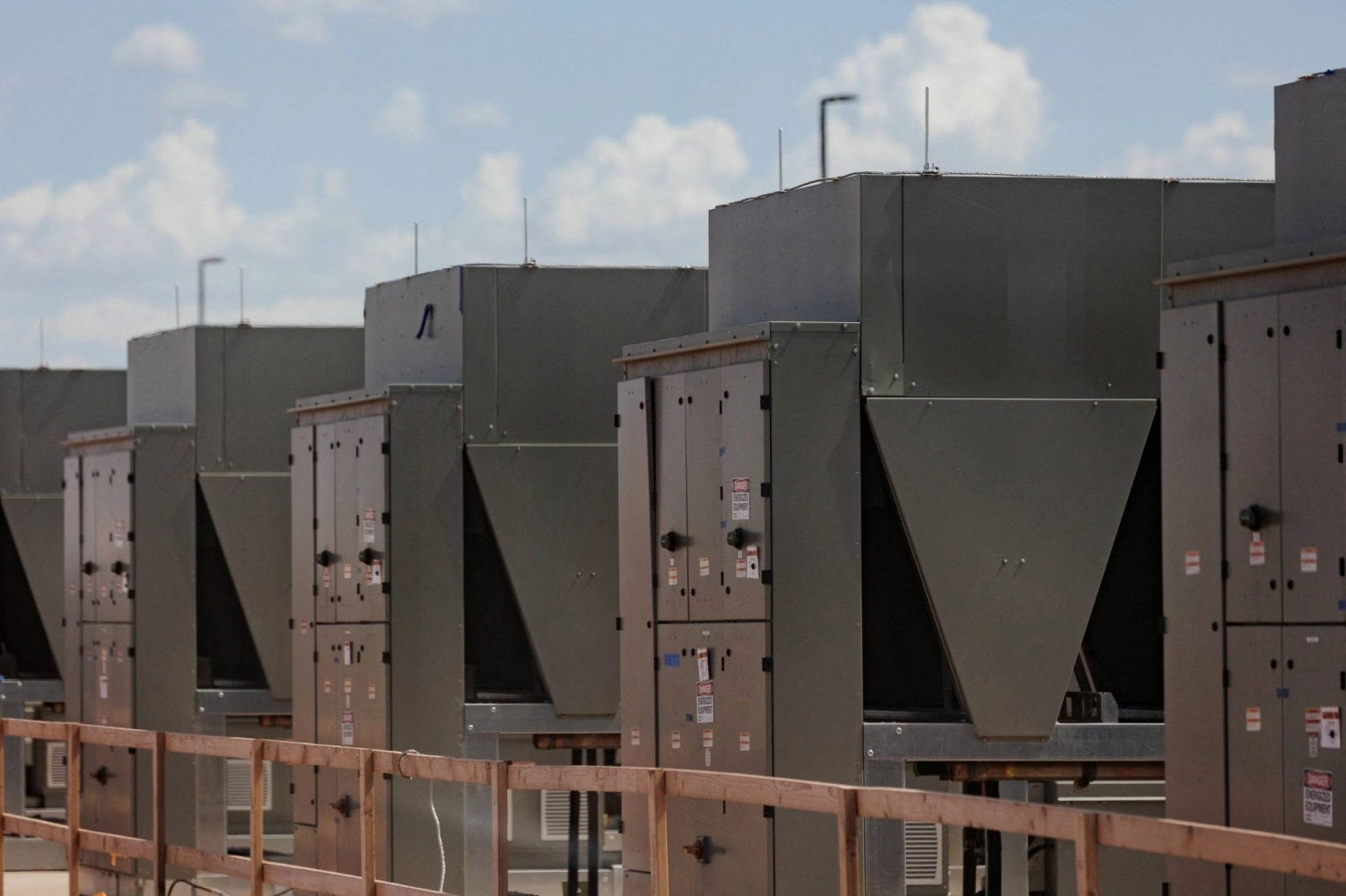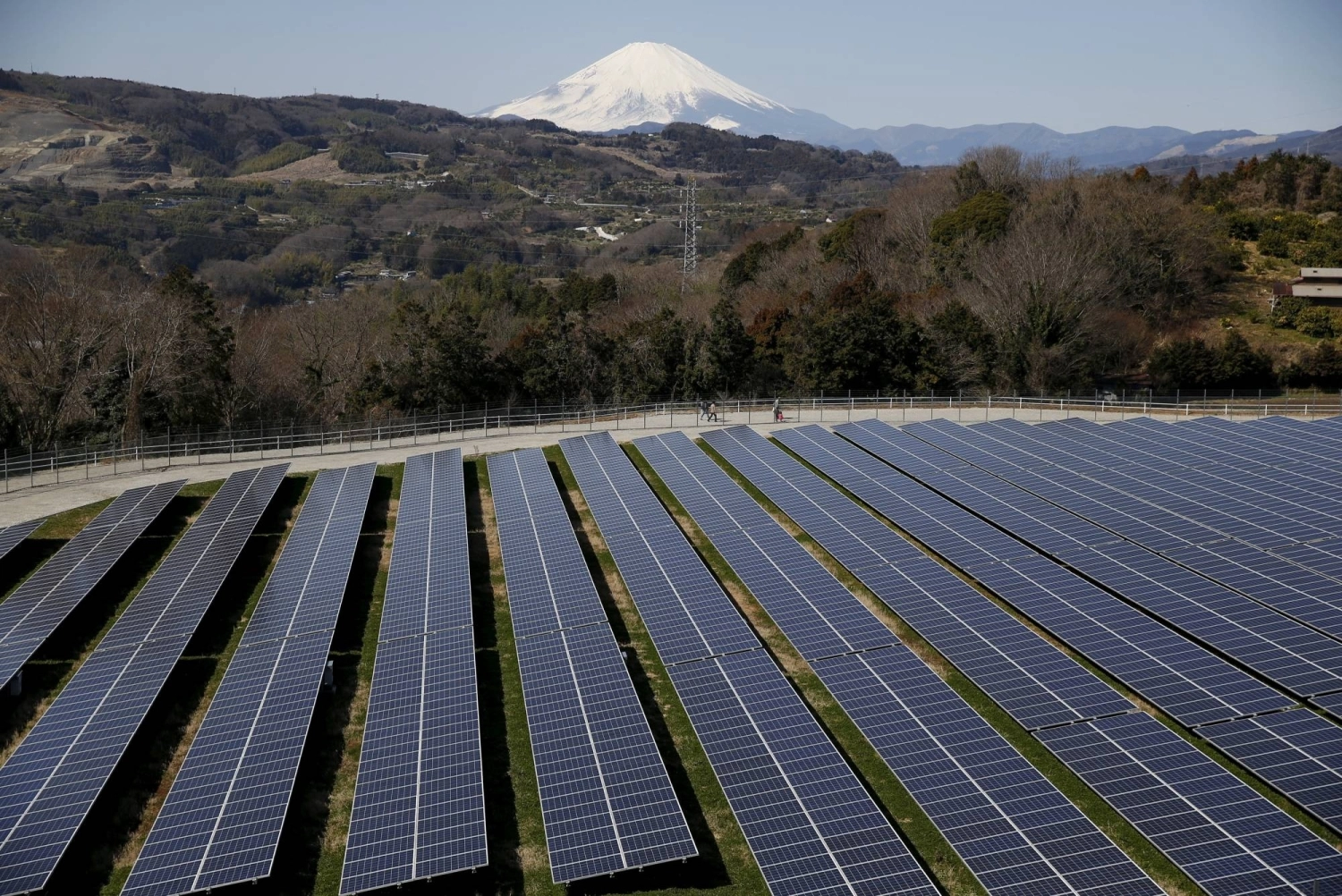The rise of generative artificial intelligence is causing a massive surge in electricity consumption by data centers around the world, with such centers projected to consume 3% of global energy by 2030 if current trends continue, according to the International Energy Agency. And that is almost certainly going to hold true in Japan, the premier data center destination in Asia.
Japan’s current industrial strategy centers around courting AI firms and chipmakers to build data centers and semiconductor plants in the nation, with the giant new Taiwan Semiconductor Manufacturing Company (TSMC) factories in Kumamoto Prefecture being a prime example. At the same time, Japan has pledged to be carbon neutral by 2050 and is bidding to decarbonize an energy sector that is still heavily reliant on fossil fuels.
Indeed, Japan has a relatively low adoption rate for renewables, as they made up around 22% of the nation’s electricity generation in 2022. That means, for now, increases in electricity consumption are directly tied to increased carbon emissions.
So whether its environmental and industrial goals are compatible remains to be seen. While some experts believe that improved efficiencies might mitigate increases in energy consumption, others say the incoming rise in data centers — and the strategy for handling their huge energy loads — could have major effects on both the country’s standing in the fight against climate change and its industrial competitiveness on the world stage.
Data center boom
Japan is in the midst of a data center-building boom: Out of Japan’s 275 publicly listed data centers, some 20% of them have opened in the last decade alone. Just this year, new large-scale data centers were launched or announced in Tokyo by Princeton Digital Group, Equinix, and DayOne, and in Fukuoka by Asia Pacific Land.
“Many data centers have been built around Japan in the last few years,” says Naohiro Masunaga, director of the Japan Data Center Council.
Masunaga explains that most data centers being built nowadays support cloud services for cellphones, of which there are estimated to be over 200 million in use in Japan, or roughly 1.5 phones per person.
“We’ve seen a significant expansion in data centers since the introduction of smartphones in 2012 and then cloud services in 2015,” he says.
Most data centers — essentially large, energy-intensive facilities for securely storing IT equipment, servers, storage and network equipment — are concentrated in the Tokyo and Osaka suburbs, where there is an abundance of access to telecommunications and energy sources via robust grids.
“Japan has a very sophisticated infrastructure, which makes it a top choice for data centers in Asia,” Masunaga says. “There aren’t many countries that are geopolitically safe while also having enough infrastructure.”
Environmental costs
Data centers consume massive amounts of electricity and water, and that will only rise as generative AI takes off in earnest. One 100-megawatt data center — the typical size of a facility designed to build large-scale AI models — can use as much water as 6,500 households and as much power as 100,000 households. Data centers worldwide already consume 32% more electricity than all of the United Kingdom. And power generation is the largest source of carbon dioxide emissions worldwide, the leading cause of the global climate crisis.
“Burning fossil fuels is a leading cause of greenhouse gas emissions, so data center growth powered by coal and natural gas could make carbon neutrality more difficult to achieve,” says Daniel Bresette, president of the Environmental and Energy Study Institute in Washington.
In addition to the electricity that powers computers and servers, massive amounts of energy and water are needed to keep all of the equipment cool. Data centers release so much warm air into the local environment that there are concerns they may create microclimates. Furthermore, data centers frequently update their hardware, leading to the disposal of electronics far earlier than the end of their actual lifespans, producing large volumes of e-waste.
Japan’s Organization for Cross-regional Coordination of Transmission Operators expects electricity demand for data centers and semiconductor plants to grow by over fourteenfold in the next decade. In response, power companies in the Osaka and Tokyo areas are pouring hundreds of billions of yen into strengthening their grids. They are also searching for ways to improve the efficiency and synergy of data centers with the surrounding city. Tokyo Electric Power Company Holdings, for instance, has a plan to recover heat emitted from data centers and supply it to nearby factories.
Although Japan is heavily reliant on coal and oil for its energy, electricity consumption has been more or less in steady decline since 2008. Perhaps surprisingly, some energy experts believe that trend will continue despite the data center boom.
Masaya Ishida, research director at the Renewable Energy Institute, is optimistic that new data centers won’t interfere with this positive trend in terms of emissions reductions. “The biggest reason for the decline in energy usage over the last 10 to 15 years is energy efficiency — heating and cooling has become much more efficient, as well as lighting,” Ishida says.

Chillers that cool water at the OpenAI data center in Abilene, Texas. Massive amounts of energy and water are needed to keep all of a data center’s equipment cool.
| REUTERS
These trends lead Ishida to a seemingly paradoxical projection: that in spite of the high energy requirements to run data centers, they aren’t necessarily dooming Japan to higher emissions. “We anticipate more adoption of AI and data centers to decrease the amount of energy consumed and CO2 gases emitted,” Ishida says.
Ishida isn’t alone in this viewpoint. A report in Scientific American in June noted that “artificial intelligence could cut global climate pollution by up to 5.4 billion metric tons a year over the next decade if it’s harnessed in ways that would improve transportation, energy and food production.”
That reduction would outpace the increased energy consumption needed to run related data centers, the article said, citing a report in the journal Npj Climate Action.
Since companies will rely on remote cloud services, they can phase out local computer rooms and customer centers, physical resources that require much higher amounts of energy.
“This projection lines up with how Japan’s electricity use has declined in spite of the proliferation of the internet and all the accompanying energy-heavy services that power it,” Ishida says.
And although Japan’s energy use has been declining for years, the country has still been rated “low” or “very low” in energy use, greenhouse gas emissions and climate policy in the Climate Change Performance Index. Ishida says that the biggest barrier to Japan’s poor climate performance, rather than new energy-heavy facilities such as data centers, lies in widespread local opposition to the construction and operation of renewable energy facilities such as solar panels or wind turbines.
“Data centers should be placed in regions that have access to, and whose citizens support, renewable energy sources,” Ishida says. “That way, new data centers can reduce Japan’s emissions and support its transition to renewable energy.”
How real are green data centers?
Some new data center and grid initiatives are explicitly taking sustainable approaches. For example, Honda, silicon manufacturer Tokuyama and Mitsubishi Corp. launched an initiative in August to build Japan’s first hydrogen-powered data center using recycled cells. Meanwhile, shipping firm Nippon Yusen, alongside NTT, Eurus Energy Holdings, MUFG Bank and the city of Yokohama are working toward an offshore floating green data center. Currently, a demonstration project is being built to show the potential for such developments in the port of Yokohama.
Masayuki Morifuku, from Nippon Yusen’s advanced tech development team, explains that the demonstration project will verify how the shaking caused by waves and salty air content affect data center performance, as well as the functionality of the solar panels and battery-based energy management.
“Offshore data centers have the potential to drastically reduce construction and land costs,” says Morifuku. “However, our clients have worries about the impacts of the sea, as well as access and connectivity, so we hope to use this project to alleviate those concerns.”
Data center experts are divided over the feasibility and desirability of remote data centers in locations rich with renewable energy, such as Kyushu or Hokkaido. Ishida says that there is no fundamental reason data centers should be concentrated in Tokyo and Osaka like they are now.
“We can see data centers increasing in Hokkaido now,” he says. “It’s really the ideal place for data centers, with lower cooling costs in the summer.”
Masunaga, however, says many data center operators have real concerns about using renewable energy. “Any electricity source works for data centers and computers, but it’s very difficult to use renewable sources like wind or solar power because the amount of energy varies,” he says. He points to companies like Google and Amazon, who tend to buy renewable credits from energy companies rather than actually run their data centers directly on those sources.
“But maybe in 10 to 15 years the technology could be more developed,” he says.

A solar farm in Nakai, Kanagawa Prefecture, in March 2016. Experts are divided over the feasibility and desirability of remote data centers in locations rich with renewable energy.
| REUTERS
Current battery technology for storing solar or wind power also struggles to meet the electricity requirements of today’s data centers, and presents its own environmental costs in terms of resources and production. However, emerging approaches such as demand-response, which anticipates the amount of energy available from renewables, is a strong candidate to help proliferate renewables in the world of data centers.
Morifuku says that there currently aren’t enough incentives for businesses and operators to build data centers in rural areas. “There are more cheap and renewable sources for energy in countryside regions of Japan, but the government needs to establish initiatives and subsidies.”
Living with data centers
The boom of data center construction in Japan hasn’t gone unnoticed. Local protests and opposition to massive new data centers in residential areas have flared up in suburban cities such as Hino in western Tokyo, and Shiroi and Inzai in Chiba Prefecture. Local residents have raised concerns about hulking, ugly buildings towering over their neighborhoods.
In Inzai, citizens were outraged when plans for a 50-meter-tall data center right in front of Chiba New Town Chuo Station were unveiled in April. Mayor Kengo Fujishiro says that while the city and its citizens have a positive view of data centers, he has serious concerns about building one in such a prime location.
Beyond aesthetics, the massive electricity usage of data centers is also an issue for a midsize city like Inzai. “Our city uses the same amount of energy as Gunma Prefecture,” Fujishiro says. “Since the electricity generation for the centers falls out of our jurisdiction, we hope to see large power companies and the national government take more action.”
While Masunaga says that most operational data centers in Japan aren’t designed to handle large AI models, Japan’s government has opted to go all-in on artificial intelligence as an efficiency and economic growth strategy. That will cause the country’s energy resources to funnel even more toward IT and computing.
“Human brains rely on only 20 or so watts of power, but AI takes millions of times that to produce shoddy results,” Masunaga says. “It would be quite alarming if computers and AI used 20% of the world’s energy.”
On the other hand, experts are worried that, unless Japan doubles down on embracing data centers and building out sustainable energy infrastructure for them, operators could flock to the U.S., China or other countries. “Japan should hurry to improve the situation, because otherwise other countries and regions will see the economic and renewable energy benefits,” says Ishida.
With Japan’s industrial policy geared toward AI, a further rise in data centers is inevitable. Whether that rise will be a blessing or a curse for Japan’s decarbonization goals will only be answered in the years to come.
www.japantimes.co.jp (Article Sourced Website)
#Japan #faces #fresh #energy #challenge #seeks #expand #powerhungry #data #centers
